One of the most fundamental safety questions I get asked is: Where to keep your VHF whilst Sea Kayaking?
This is a great question and although it may appear simple, take some time to think it through. I’m sure you can come up with different situations where you have seen a VHF carried? Below we will discover the pros and cons for all options. Hopefully allowing you to decide “Where to keep your VHF whilst sea kayaking.” Let us first agree it is fine to leave the sponge in the car but always carry a VHF whilst at Sea.
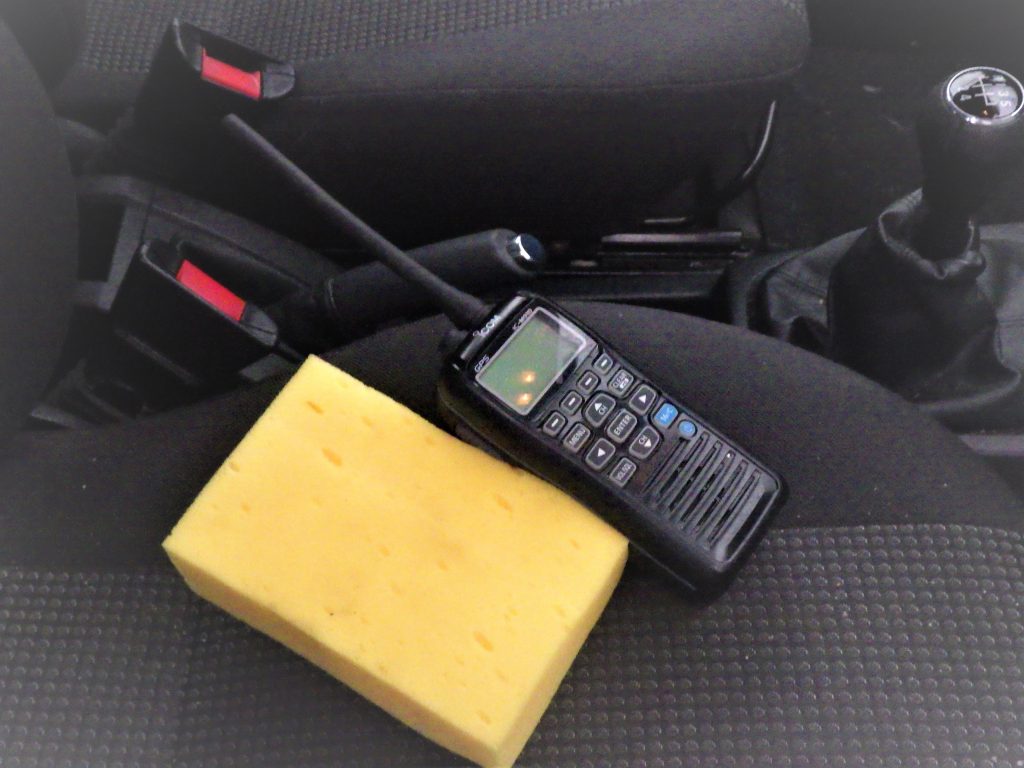
What are the options for where to keep your VHF whilst sea kayaking?
There are I believe, 4 options for carrying your VHF whilst at Sea.
- In the bow or stern hatch
- The day hatch near the top
- In the sweetie hatch / 4th hatch
- On yourself usually in a pocket of the buoyancy aid
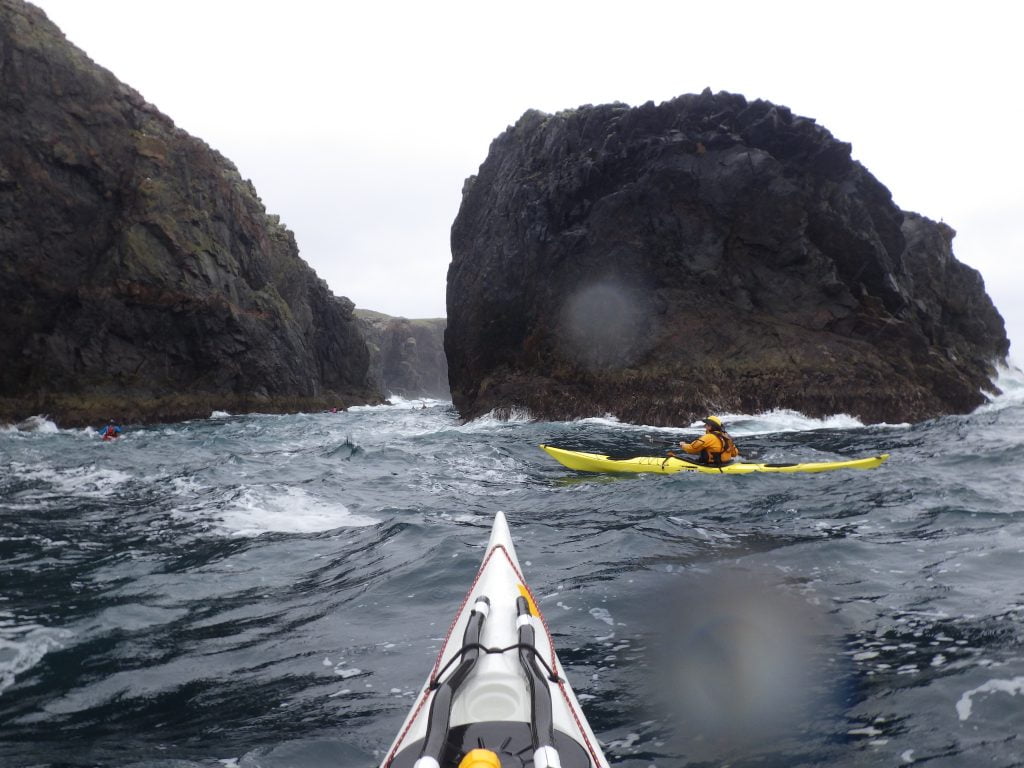
Before we look at the 4 options mentioned above. Let us consider why we carry a VHF? Any thoughts ………………….? You probably came up with something like this: signalling a Mayday, calling the coastguard, for an emergency , getting a weather forecast, communicating with other vessels, staying in touch with your group, knowing your position, use as a compass etc.. Great, these are all good uses and I’m sure you had some more.
In which case, in the above photo off Shetland with some sporty swell, how many kayakers are in front of me? Then in the second photo, below, where have they all gone?

There are 5 sea kayakers who are temporarily hidden as kayaker number 6 drops in off the back of the swell. Hold that thought as we look at the 4 options of where to have your VHF whilst sea kayaking.
Where to keep your VHF: Option 1
The Stern or Bow Hatch. Both these hatches have plenty of room for kit, enough for weeks of expeditions. (Click the photo to see how much) They could easily hold the VHF but how quickly can you access it? On land at base camp, no problem to gain access but on the water in the above situation? Think very carefully about carrying you VHF here. May be the spare.
Where to keep your VHF: Option 2
The Day Hatch. This hatch is conveniently located behind you and is easy to access if you have the flexibility? When using the day hatch for your VHF make sure it is on the top and can be simply extracted. The down side for the VHF being here is there could possibly be ingress of water into the hatch. The amount will depend on; sea state, the size of your hatch and how much other kit you have in it. Either way not enough water to make the kayak unstable or unmanageable. Worth thinking it through though.

With the day hatch what else do we need to consider………? Again the main issue is how quickly will you need the VHF and in what sea conditions? Time to think about where you are paddling, the conditions you are out in, the predicted future conditions, who you are paddling with, what activities your are up to and the likelihood of needing the VHF? If your answer to all of these means you can easily and without hesitation retrieve the VHF then the day hatch could be the place for your VHF today. Go back to the Shetland photos and ask yourself would you be alright with the VHF in your day hatch? Think about who you normally paddle with or why you might be in those conditions before you decide. If not then maybe option 3 is a better call.
Where to keep your VHF: Option 3

The Sweetie or Fourth Hatch. Straight away if you have this hatch it becomes obvious how much easier it is to access. No twisting and of course the volume of water ingress will be insignificant. This could then be a good option. What do you need to consider? Position of the VHF and its size. Can it be extracted without hindrance? Will anything else like chocolate get in the way? Or will I loose anything out of this hatch when I have the cover off? All of which, can simply be rectified if needed. This then could be a good place for that VHF today.
Before deciding once and for all this is the best place for the VHF lets ponder some thoughts. We know that we should consider the above options of ; when, who, where, what etc. and these still apply. There are however some other points to think about. Where do you put your paddles when you are rescuing someone? Where and how do you support a kayaker in a tow? How easy is it for someone else to access this hatch if you are unwell? Have a think and I’m sure you can come up with some more scenarios that are worth noting. Again referring back to the Shetland photos how do you feel about having the VHF in the sweetie hatch?………………
Of course there is one contentious issue which so far we have not raised. What happens if you are separated from your kayak?….. May be we need a 4th option, lets take a look.
Where to keep your VHF: Option 4
On your person. Keeping the VHF on your person and not in the Sea Kayak has the immediate benefit of proximity. Access is straight forward and you can choose your left or right hand side to suit. If wearing the VHF on your buoyancy aid there are few points to consider?
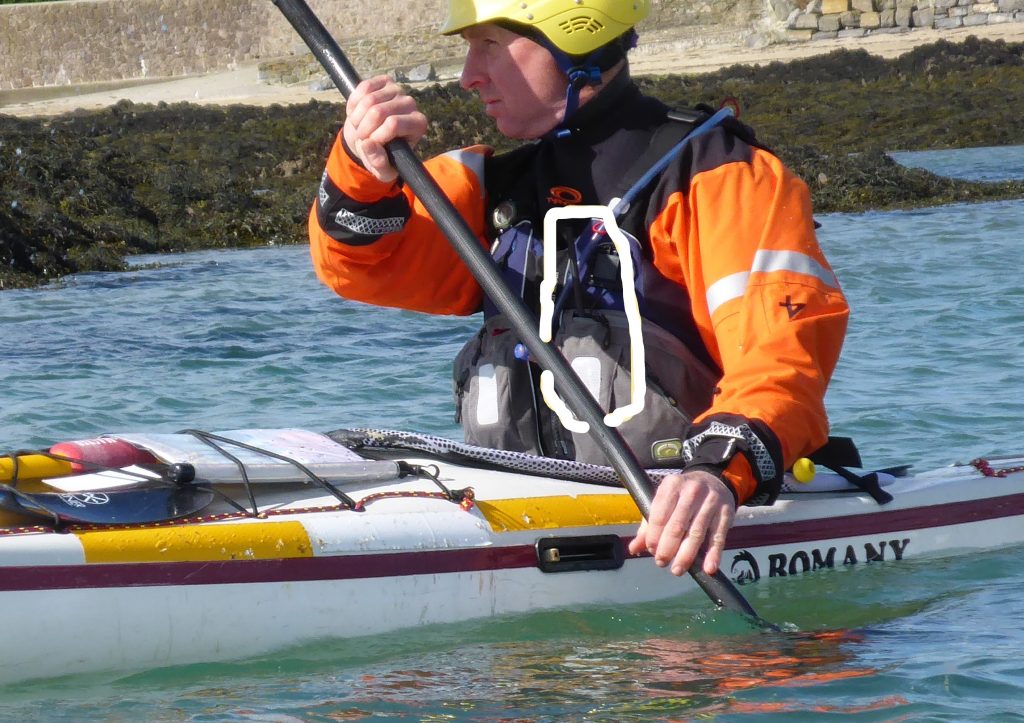
Firstly and hopefully obviously, make sure your VHF is waterproof. By this I mean submersible to at least 1m for 30min and rated IPX7 as minimum. This will ensure the VHF is still working after, splashing, rolling and accidental swimming. If your VHF does not meet this standard then make sure it has a good specific VHF waterproof case. Wherever you carry your VHF an IPX7 will protect against those unexpected moments at sea. However, once you are wearing the VHF on your person then it is going to get a lot wetter than in a hatch.
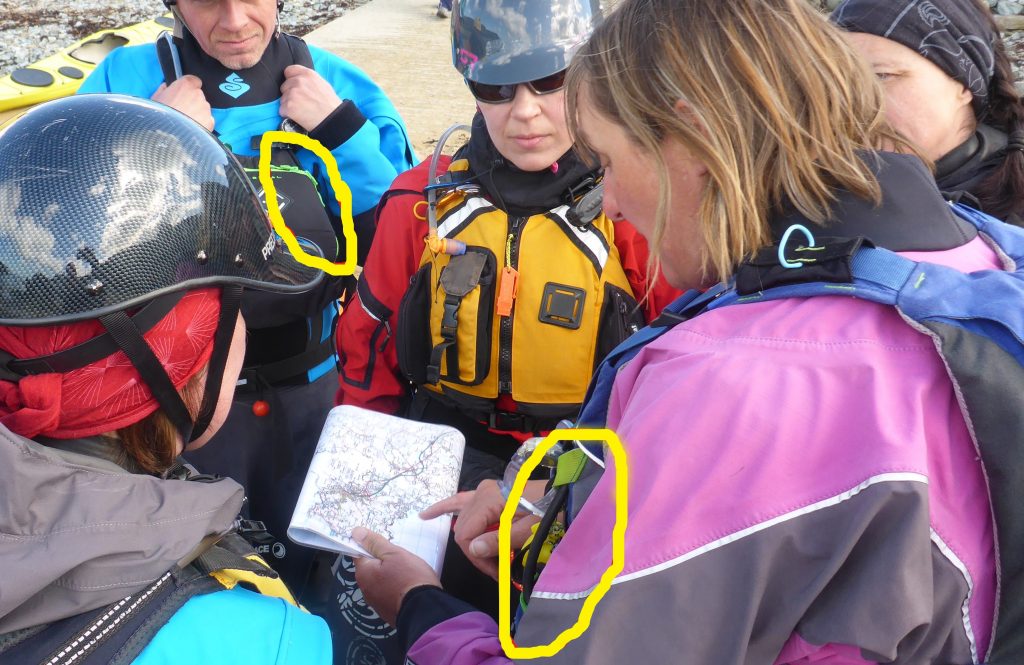
When the VHF is on your PFD there are a few things to consider: is the VHF secure (i.e. can I loose it), is the antenna getting in the way or being a hazard, will the position of the VHF impinge on my paddling or self rescues?
These are just a few thoughts and you might have others but lets quickly look at each point.
- Is the VHF secure? When the VHF is in a pocket it will be secure but if you have it clipped outside your PFD or if you need to quickly drop the VHF and paddle, will you still have it in 20 seconds time? One simple method to attach the VHF is to use a small piece of bungee cord (3mm) is fine. Then tie it to the inside of a pocket. Then when in use or when clipped to the PFD you will not loose it.
- As for the antenna getting in the way, try putting the VHF inside a pocket until you need it. Or stick it under part of the PFD, see above photo.
- The final consideration if carrying the VHF on your PFD is to think about or better still practice paddling and self rescuing. Try to be objective and see if your trunk rotation is affected. One pocket may be better than another. With the self rescue, notice if the bulk and antenna are restricting or limiting your ability. This might be restricting ease of clambering onto your back deck, or getting caught up with paddles and tow lines. One key point to pay specific attention too is time. Does wearing the VHF mean it takes longer to regain entry into your kayak assisted or unassisted? If yes is the answer then think about those photos in Shetland. Where would you want your VHF on this day? May be out the way?
Summing up: where to keep your VHF whilst Sea Kayaking?
I believe to answer this question we must go right back to the first question. Why do you carry a VHF? In understanding this, you will be able to decide each time you head out to sea where you will be keeping your VHF on today’s sea kayak trip.
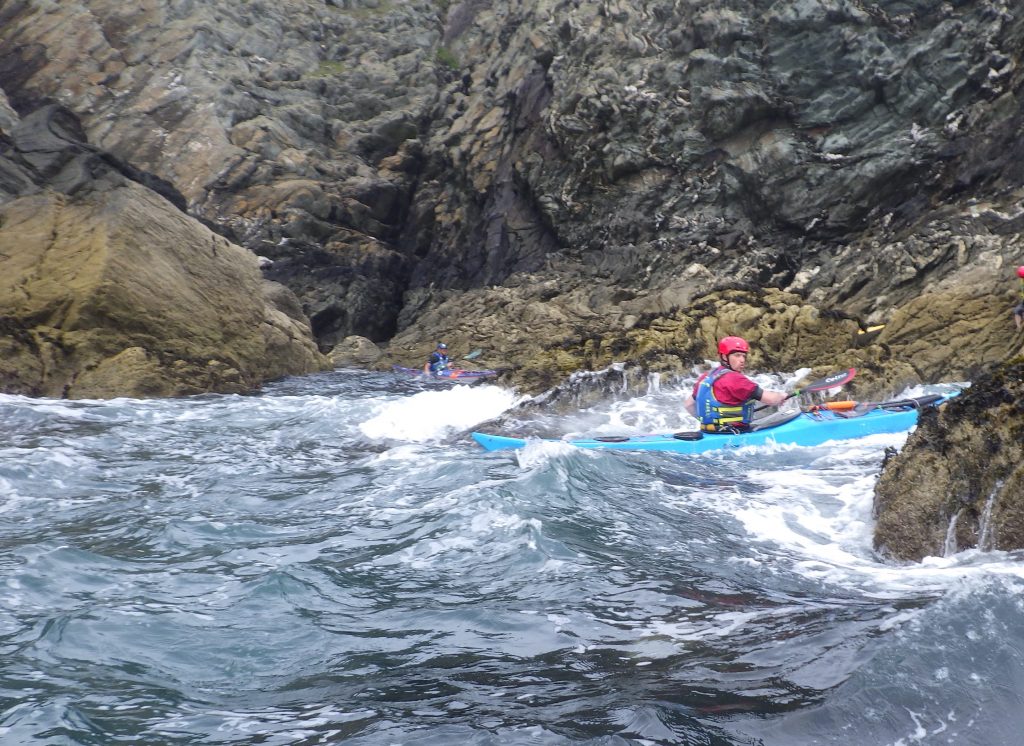
Combined with Why we also have the: Where, What, Who & likelihood of needing the VHF to contemplate. Once you have worked through each of these points you will be best suited to decide where you want to carry your VHF.
Back in Shetland for one last time:
Instinctively where would you carry your VHF?
Now ask yourself why this is? ……………………………..
Are you expecting to use the VHF? anticipating an emergency? or expecting to be separated from your kayak? If the answer is yes then you will need your VHF to hand very quickly and probably best on your PFFD. If your answer to these is No then ask yourself :
Are the sporty conditions stretching your group too much? Will the group be able to carry out a rescue or two. How about simultaneous rescues? What is the likelihood of needing the VHF quickly? If you think it is likely to get out of hand then you will need that VHF quickly and probably best on your PFD. If your answer is No its all oaky then ask yourself:
Where shall I carry my VHF today, in the day hatch, in the sweetie hatch or in a PFD pocket? The choice is yours and hopefully this blog has made you stop and think. In which case great, that is the key to all safety, think it through as best you can beforehand. Then choose the most appropriate response for the conditions at hand.

One last question to ask yourself. “If I get on the water expecting to use my VHF in an emergency should I be leaving dry land?”……….
Thanks to those who joined in on Facebook and Instagram to help the discussion along and chisel away at my thought process, much appreciated: David, Peter, Ian, Richard, Carlo and Gavin, Cheers.
Come and Join us at discovery kayaking for endless discoveries, boundless explorations and limitless development. Or please do look at our other courses and trips. Whatever you choose, keep enjoying your sea kayaking and discovery kayaking looks forward to seeing you afloat soon. Gordon.




